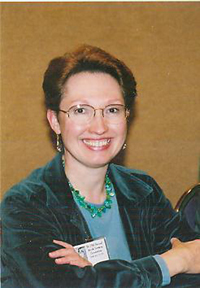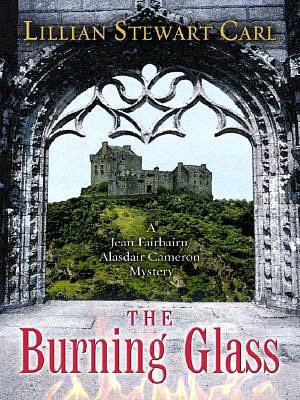Lillian Stewart Carl
“That chapel proud, where Roslin’s chiefs uncoffin’d lie.”—Sir Walter Scott
Several miles south of Edinburgh stands Rosslyn Chapel, built by the Sinclair family in the 15th century and dedicated to St. Matthew. With its lavish carvings—the stone might just as well have been butter—Rosslyn Chapel was an anomaly even in Catholic Scotland. For it to have survived the violent transition to Protestantism testifies to its being a very special place.
Is it the quality of its workmanship that makes it special, or something more?
The answers to that question range from the feasible (that Rosslyn is the hiding place of Scotland’s crown jewels), to the bizarre (that its sculptures are musical notes or maps of the New World or hints to religious secrets dating back to early Christianity).
I visited Rosslyn in 2001 because that’s where I intended to set my book The Burning Glass. There were so few people there my husband and I wandered at will through the chapel and up the scaffolding erected so that masons—small “m” masons—could repair its crumbling exterior. We enjoyed tea and cookies in the garden which chased away the wet-dog smell of decay in the chapel itself.
I’ve read pseudo-history for many years, including Holy Blood, Holy Grail, whose authors sued the author of The Da Vinci Code for plagiarism, and The Templar Revelation, published six years before The Da Vinci Code, whose first chapter is titled “The Secret Code of Leonardo da Vinci.” The theme of my series is that perception is reality, and that belief is a marketable product—whether it comes to Bonnie Prince Charlie (The Secret Portrait), the Loch Ness monster (The Murder Hole), or speculative history (The Burning Glass). So like Jean Fairbairn, the heroine of the Fairbairn/Cameron mystery series, I find it highly entertaining when authors try to prove their conspiracy theories by crawling to the end of perceptual limbs and clinging desperately to fallacy and twig alike.
Before I’d even started writing The Burning Glass, the Da Vinci juggernaut made Rosslyn Chapel so famous that now visitors can only enter with scheduled tours, and must contend with long lines. So I decided to create my own “chapel of ease” for The Burning Glass.
 A chapel of ease is a place of worship for the convenience of parishioners residing at some distance from the main church. My chapel, Ferniebank, was supposedly built by the same family and the same hands that built Rosslyn, but it’s a little further south in the Scottish Borders, the area described by H.V. Morton as part fairyland and part battlefield.
A chapel of ease is a place of worship for the convenience of parishioners residing at some distance from the main church. My chapel, Ferniebank, was supposedly built by the same family and the same hands that built Rosslyn, but it’s a little further south in the Scottish Borders, the area described by H.V. Morton as part fairyland and part battlefield.
While Ferniebank—a chapel of unease, if you will—is based on Rosslyn, the adjacent half-ruined Ferniebank Castle is based on two real castles: Neidpath Castle, a gray tower near Peebles filled with crumbling plaster and suggestive shadows; and Huntingtower Castle, which is outside Perth. Huntingtower is a much tidier ruin, and the resident caretaker lives in a flat that’s been built into one corner of the medieval tower.
I visited Huntingtower in 2000, before Jean Fairbairn and Alasdair Cameron were gleams in my muse’s eye, but I knew that flat would some day figure in a story. And so it has. Jean and Alasdair live in that flat, and they not only have to build a relationship while criminals and ghosts walk the darkened rooms of the castle, they also have to deal with murder, both modern and ancient.
My plot is based on the popularity of secret history books in general and The Da Vinci Code in particular. In The Burning Glass, tourists overflow Rosslyn and descend upon Ferniebank, a new owner plans its conversion to a New Age spa, and what looks like a simple case of myth-mongering becomes a mad mouse ride through historical fantasy. For it doesn’t matter what drives the traffic in secret history—it’s a lucrative business, and money is as much a motive for crime as jealousy.
“There’s nothing wrong with myth,” Jean insists, while Alasdair retorts, “The danger comes in hiding from the fact that they are myths.”
And yet the border between myth and history is as doubtful as that between Scotland and England. Just ask the beleaguered caretakers of Rosslyn Chapel.
The Burning Glass, Lillian Stewart Carl, Five Star, $25.95
This article first appeared in Mystery Scene Fall Issue #101.


